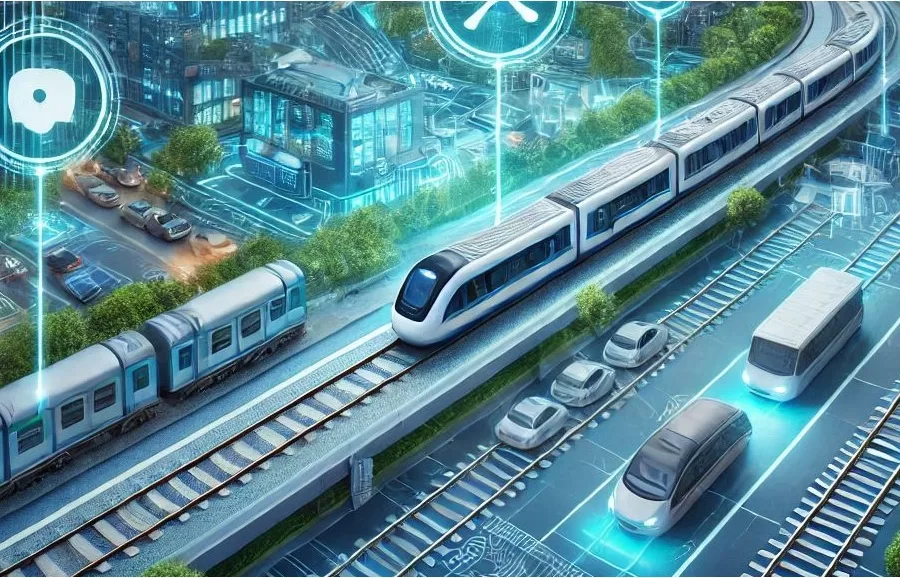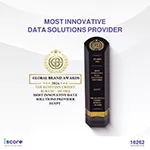Auto
The Future of Transit in NYC – Smart Systems, Modern Rails, and Electric Vehicles

What does it take to keep a city of over 8 million people moving efficiently in the face of modern challenges? New York City, a global hub of commerce and culture, is reimagining its transportation network to address the growing demands of urban life. From groundbreaking subway upgrades to innovative technologies for managing traffic and integrating electric and autonomous vehicles, the city is leading the way in urban mobility.
These efforts are not just about improving daily commutes, they aim to create a safer, more sustainable, and forward-thinking infrastructure that sets the standard for cities worldwide.
Riding the Rails into Tomorrow
New York City’s Metropolitan Transportation Authority is actively modernizing its subway system to enhance reliability and accommodate increasing ridership. In 2023, the MTA introduced the R211 subway cars, featuring wider doors, security cameras, and digital displays to improve passenger experience. These new cars are part of a $6.1 billion investment aimed at upgrading the subway fleet.
Ridership has been on the rise, with the subway system surpassing 1 billion riders in 2023. To support this growth, the MTA has been implementing Communication-Based Train Control (CBTC) on key lines, such as the Queens Boulevard Line, to increase train frequency and reduce delays. CBTC allows for more efficient train operations by enabling real-time tracking and closer train spacing.
Accessibility improvements are also a priority, with the MTA committing to install 29 new elevators across various subway stations to make the system more accessible to all passengers. This initiative is part of the 2020-2024 Capital Program, which allocates $5.2 billion to enhance station accessibility. The MTA has also been refurbishing stations through the Station Re-NEW-vation Program, aiming to complete 50 station enhancements by the end of 2023 to provide a cleaner and more pleasant environment for commuters.
Rethinking the Grid with Smart and Safer Systems
New York City is actively enhancing its transportation network by implementing smart technologies and safety initiatives to improve traffic flow and protect its residents.
Smart Traffic Management
The city has introduced advanced traffic management systems that utilize real-time data to optimize traffic flow. For instance, the “Midtown in Motion” program employs microwave sensors, traffic cameras, and E-ZPass readers to monitor congestion in Midtown Manhattan. This system enables traffic engineers to adjust signal patterns remotely, effectively reducing congestion in one of the city’s busiest areas.
The deployment of edge AI-powered real-time traffic analysis solutions has contributed to enhanced safety and optimized traffic flow. By reducing traffic congestion, these solutions have created a safer environment for both drivers and pedestrians, leading to smoother traffic flow and a decrease in accidents and delays.
Pedestrian and Cyclist Safety
Under the Vision Zero initiative, New York City has made significant strides in improving pedestrian safety. In 2023, the city recorded one of the lowest numbers of pedestrian fatalities in over a century, reflecting the effectiveness of data-driven approaches to street design and traffic enforcement.
However, challenges remain for cyclists. The first quarter of 2023 was particularly deadly for bike riders, with nine fatalities, the highest number recorded under Vision Zero for that period. This underscores the need for continued investment in protected bike lanes and cyclist safety measures. For pedestrians and cyclists in areas like the Bronx, where accidents often occur despite safety improvements, consulting a Bronx slip and fall lawyer can be crucial in navigating legal options after an injury.
Integration of Public and Private Transport
The city is also focusing on reimagining curb space to accommodate the rise in e-commerce deliveries and ride-sharing services. In September 2023, Mayor Eric Adams and DOT Commissioner Ydanis Rodriguez unveiled a comprehensive effort to deploy innovative tools and strategies aimed at reducing congestion, double parking, and vehicle emissions.
This initiative includes the implementation of “smart curbs” in select neighborhoods to test innovative curb uses. By embracing these smart and safety-focused systems, New York City aims to create a more efficient and secure transportation environment for all its residents and visitors.
Paving the Way for Electric and Autonomous Vehicles
New York City is actively expanding its electric vehicle infrastructure to support a sustainable transportation future. As of January 2023, the city operates over 4,800 EVs within its municipal fleet and has installed 1,805 charging stations across the five boroughs. This progress is part of a broader initiative to transition the entire city fleet to zero-emission vehicles by 2038.
In parallel, the city is facilitating the responsible testing of autonomous vehicles (AVs) on its streets. In March 2024, Mayor Eric Adams announced the opening of applications for a new permit program, establishing stringent safety requirements for AV testing. This program mandates that a trained driver be present behind the wheel at all times during testing, ensuring safety while fostering innovation in urban mobility.
One key component of this transition is the integration of fintech solutions to streamline payment systems at EV charging stations. Innovations in digital payments have made charging more accessible and efficient, offering seamless payment experiences through mobile apps and contactless options.
These initiatives reflect New York City’s commitment to integrating advanced vehicle technologies into its transportation network, aiming to reduce emissions and enhance safety. By investing in EV infrastructure and regulating AV testing, the city is paving the way for a future where electric and autonomous vehicles play a central role in urban transportation.
NYC as a Model for Urban Transportation Innovation
New York City is at the forefront of urban transportation innovation, implementing cutting-edge technologies and strategies to enhance mobility and infrastructure management. In December 2024, the University Transportation Research Center (UTRC) at The City College of New York partnered with the New York City Department of Transportation (NYC DOT) on two transformative projects, supported by $16 million in federal funding. These initiatives aim to revolutionize urban mobility through advanced artificial intelligence and smart technology solutions, positioning the city as a leader in addressing congestion and improving transportation efficiency.
In September 2023, Mayor Eric Adams and NYC DOT Commissioner Ydanis Rodriguez unveiled a comprehensive effort to reimagine the city’s curb space. The Curb Management Action Plan details 10 actions to reduce congestion, double parking, and vehicle emissions while enhancing the movement of people, goods, and services. This initiative includes the implementation of “smart curbs” in select neighborhoods to test innovative curb uses, reflecting the city’s commitment to leveraging technology for urban improvement.
Conclusion
What does the future of transportation look like when innovation and sustainability converge? New York City offers a compelling answer through its strategic investments in smart technologies, public transit modernization, and readiness for electric and autonomous vehicles.
By addressing congestion, enhancing safety, and embracing cutting-edge solutions, NYC is not only transforming its own urban grid but also setting a global example for sustainable and efficient transportation. As these initiatives continue to unfold, they promise to redefine how millions navigate and experience one of the world’s busiest cities.




















































